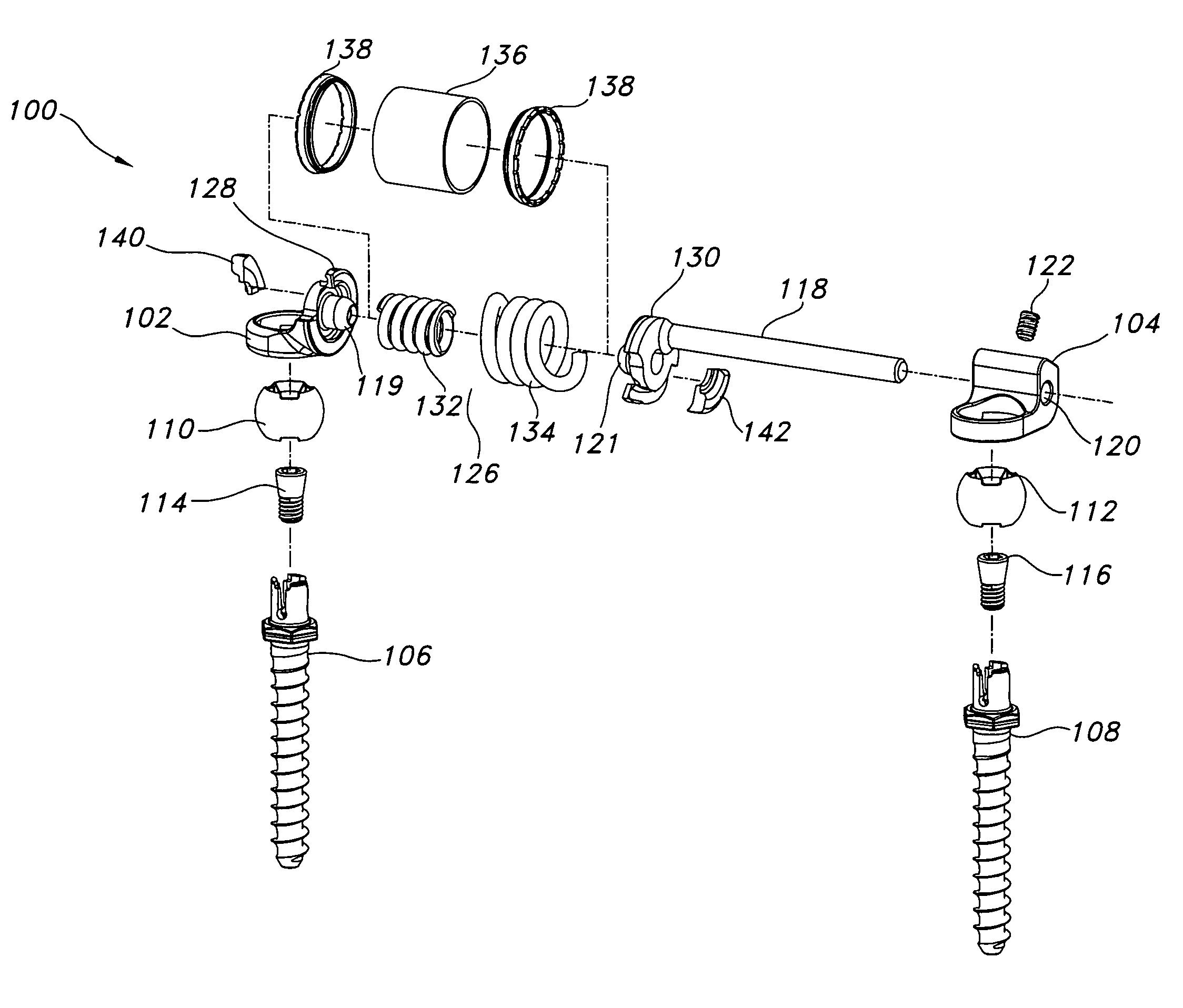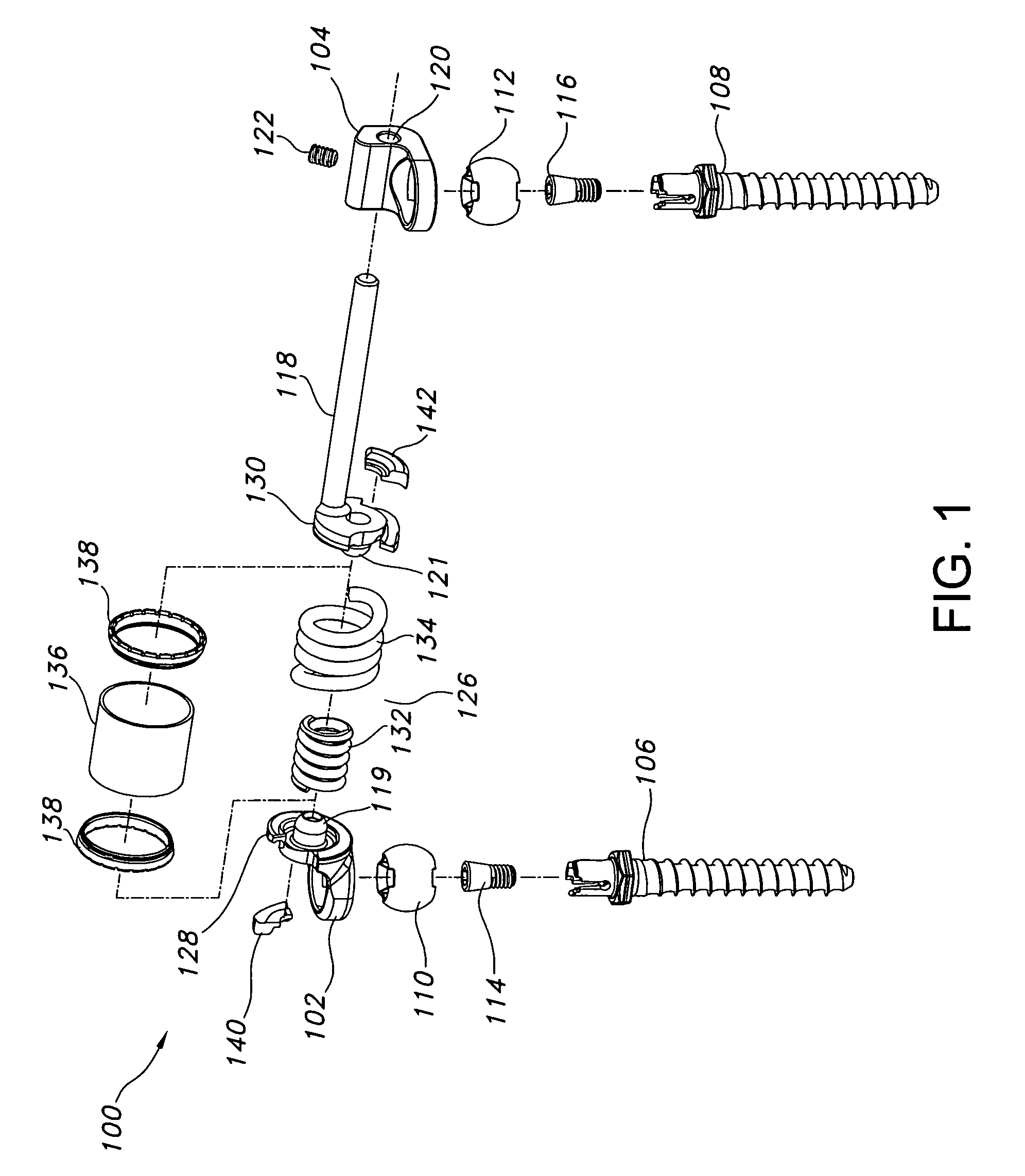Spinal stabilization device with weld cap
a technology of spinal stabilization device and weld cap, which is applied in the direction of osteosynthesis device, prosthesis, manufacturing tools, etc., can solve the problems of accelerating degeneration at those levels, resilient elements developing significant internal stress levels, and reducing range of motion, so as to promote reliable and effective spinal stabilization
- Summary
- Abstract
- Description
- Claims
- Application Information
AI Technical Summary
Benefits of technology
Problems solved by technology
Method used
Image
Examples
Embodiment Construction
[0032]The present disclosure provides advantageous devices, systems and methods for improving the reliability, dependability and / or durability of spinal stabilization systems. More particularly, the present disclosure provides advantageous devices, systems and methods for mechanically mounting resilient elements (e.g., torsion springs and / or coil springs) to, and / or for coupling resilient elements between, structural members (e.g., plates, caps, flanges, rods, and / or bars) associated with dynamic spinal stabilization systems. The mounting and / or coupling methods / techniques of the present disclosure provide enhanced reliability, dependability and / or durability without significantly increasing material weight or volume requirements and without compromising the important functions of the dynamic spinal stabilization devices / systems of which they form a part.
[0033]The exemplary embodiments disclosed herein are illustrative of the advantageous spinal stabilization devices / systems and sur...
PUM
| Property | Measurement | Unit |
|---|---|---|
| temperatures | aaaaa | aaaaa |
| height | aaaaa | aaaaa |
| height | aaaaa | aaaaa |
Abstract
Description
Claims
Application Information
 Login to View More
Login to View More - R&D
- Intellectual Property
- Life Sciences
- Materials
- Tech Scout
- Unparalleled Data Quality
- Higher Quality Content
- 60% Fewer Hallucinations
Browse by: Latest US Patents, China's latest patents, Technical Efficacy Thesaurus, Application Domain, Technology Topic, Popular Technical Reports.
© 2025 PatSnap. All rights reserved.Legal|Privacy policy|Modern Slavery Act Transparency Statement|Sitemap|About US| Contact US: help@patsnap.com



